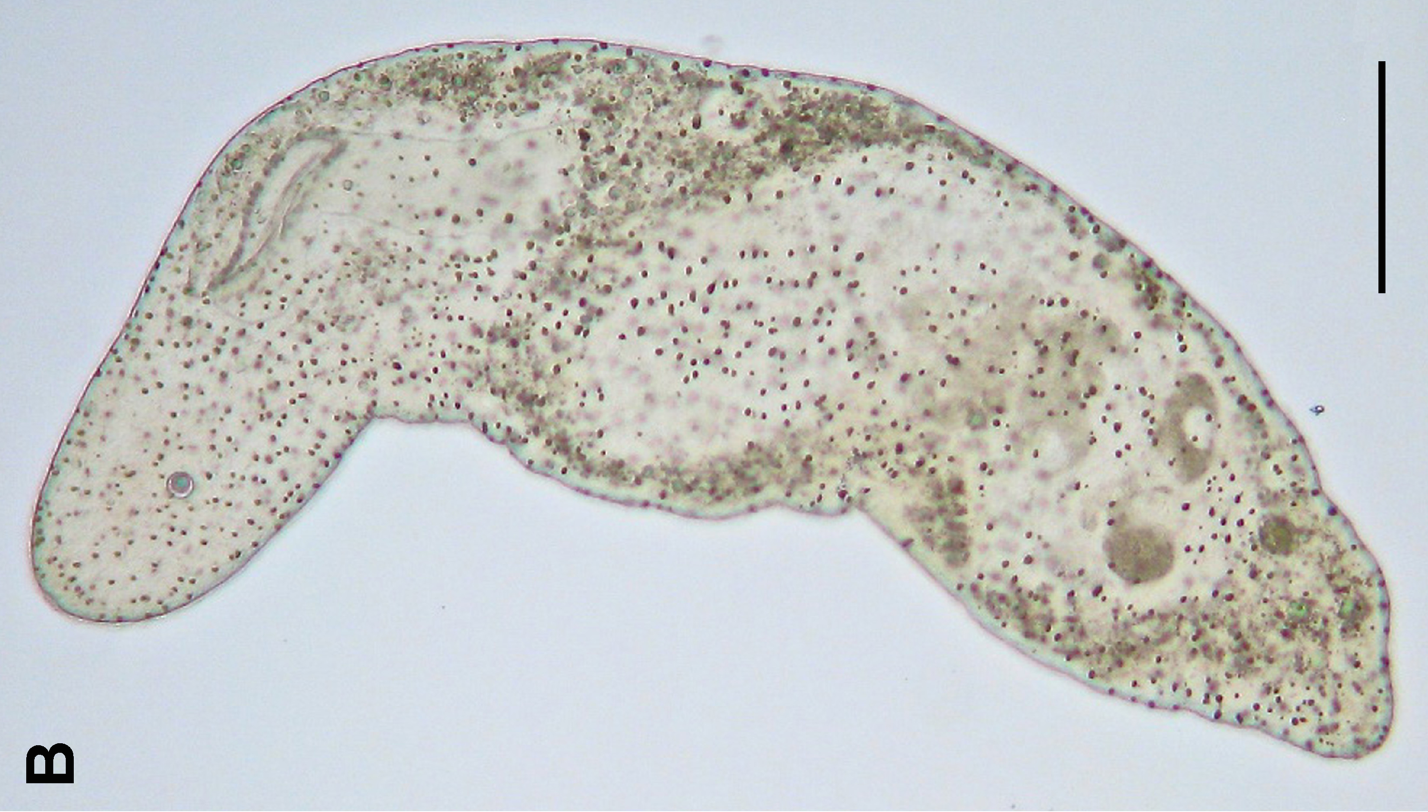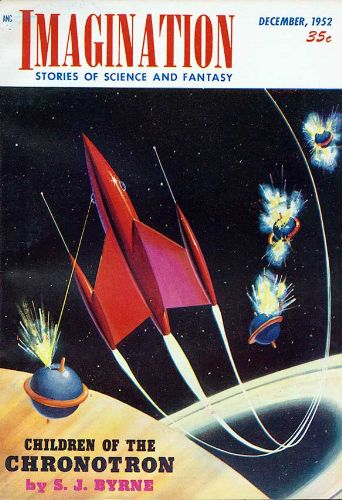|
Tardigrada
Tardigrades (), known colloquially as water bears or moss piglets, are a phylum of eight-legged Segmentation (biology), segmented micro-animals. They were first described by the German zoologist Johann August Ephraim Goeze in 1773, who called them . In 1776, the Italian biologist Lazzaro Spallanzani named them Tardigrada, which means 'slow walkers'. They live in diverse regions of Earth's biospheremountaintops, the deep sea, tropical rainforests, and the Antarctic. Tardigrades are among the most resilient animals known, with individual species able to survive extreme conditions – such as exposure to extreme temperatures, extreme pressures (both high and low), air deprivation, radiation, dehydration, and starvation – that would quickly kill most other forms of life. Tardigrades have survived exposure to outer space. There are about 1,500 known species in the phylum Tardigrada, a part of the superphylum Ecdysozoa. The earliest known fossil is from the Cambrian, some 500 m ... [...More Info...] [...Related Items...] OR: [Wikipedia] [Google] [Baidu] |
Ecdysozoa
Ecdysozoa () is a group of protostome animals, including Arthropoda (insects, chelicerates (including arachnids), crustaceans, and myriapods), Nematoda, and several smaller phylum (biology), phyla. The grouping of these animal phyla into a single clade was first proposed by Eernisse ''et al.'' (1992) based on a phylogenetic analysis of 141 morphological characters of ultrastructural and embryological phenotypes. This clade, that is, a group consisting of a common ancestor and all its descendants, was formally named by Aguinaldo ''et al.'' in 1997, based mainly on phylogenetic trees constructed using 18S ribosomal RNA genes. A large study in 2008 by Dunn ''et al.'' strongly supported the monophyly of Ecdysozoa. The group Ecdysozoa is supported by many Morphology (biology), morphological characters, including growth by ecdysis, with moulting of the cuticle – without mitosis in the epidermis – under control of the prohormone ecdysone, and internal fertilization. The group was i ... [...More Info...] [...Related Items...] OR: [Wikipedia] [Google] [Baidu] |
Milnesium Tardigradum
''Milnesium tardigradum'' is a cosmopolitan species of tardigrade that can be found in a diverse range of environments. It has also been found in the sea around Antarctica. ''M. tardigradum'' was described by Louis Michel François Doyère in 1840. It contains unidentified osmolytes that could potentially provide important information in the process of cryptobiosis. Description Morphology ''M. tardigradum'' has a symmetrical body with eight legs; it uses claws—a distinctive feature of this tardigrade species. The total length of the body varies, with some measuring up to 0.7 mm in length. ''M. tardigradum'' have been found to possess a high level of radioresistance. In 2007, individuals of two tardigrade species, '' Richtersius coronifer'' and ''M. tardigradum'', were subject to the radiation, near-vacuum, and near-absolute zero conditions of outer space as part of the European Space Agency's Biopan-6 experiment. Three specimens of ''M. tardigradum'' survived. The ... [...More Info...] [...Related Items...] OR: [Wikipedia] [Google] [Baidu] |
Echiniscus
''Echiniscus'' is a genus of tardigrade Tardigrades (), known colloquially as water bears or moss piglets, are a phylum of eight-legged segmented micro-animals. They were first described by the German zoologist Johann August Ephraim Goeze in 1773, who called them . In 1776, th ...s in the family Echiniscidae. The genus was named and described by Karl August Sigismund Schultze in 1840. Species The genus includes the following species: * '' Echiniscus africanus'' Murray, 1907 * '' Echiniscus aliquantillus'' Grigarick, Schuster & Nelson, 1983 * '' Echiniscus angolensis'' da Cunha & do Nascimento Ribeiro, 1964 * '' Echiniscus apuanus'' Bertolani, 1946 * '' Echiniscus arcangelii'' Maucci, 1973–74 * '' Echiniscus arctomys'' Ehrenberg, 1853 * '' Echiniscus arthuri'' Pilato, Binda & Lisi, 2005 * '' Echiniscus azoricus'' Fontoura, Pilato & Lisi, 2008 * '' Echiniscus baius'' Marcus, 1928 * '' Echiniscus baloghi'' Iharos, 1973 * '' Echiniscus barbarae'' Kaczmarek & Micha ... [...More Info...] [...Related Items...] OR: [Wikipedia] [Google] [Baidu] |
Lazzaro Spallanzani
Lazzaro Spallanzani (; 12 January 1729 – 11 February 1799) was an Italian Catholic priest (for which he was nicknamed Abbé Spallanzani), biologist and physiologist who made important contributions to the experimental study of bodily functions, animal reproduction, and animal echolocation. His research on biogenesis paved the way for the downfall of the theory of spontaneous generation, a prevailing idea at the time that organisms develop from inanimate matters, though the final death blow to the idea was dealt by French scientist Louis Pasteur a century later. His most important works were summed up in his book ''Expériences pour servir a l'histoire de la génération des animaux et des plantes'' (''Experiences to Serve to the History of the Generation of Animals and Plants''), published in 1785. Among his contributions were experimental demonstrations of fertilisation between ova and spermatozoa, and ''in vitro'' fertilisation''.'' Biography Spallanzani was born in Sc ... [...More Info...] [...Related Items...] OR: [Wikipedia] [Google] [Baidu] |
Mesotardigrada
Mesotardigrada is one of three classes of tardigrades, consisting of a single species, ''Thermozodium esakii''. The animal reportedly has six claws of equal length at each foot. This species was described in 1937 by German zoologist Gilbert Rahm from a hot spring near Nagasaki, Japan. The inability of taxonomists to replicate Rahm's finding has cast doubt on the accuracy of the description, making ''T. esakii'', and by extension the entire class Mesotardigrada, a ''taxon inquirendum''. Taxonomic ambiguity The type specimen Rahm used as the basis of his description has either been lost or it was never preserved in the first place, which Grothman ''et al''. (2017) suggest is consistent with the lax taxonomic standards of the 1930s. Thus, re-examination of the original specimen is not possible. Complicating matters further, the type locality from which Rahm collected his specimen may have been destroyed by an earthquake and subsequent searches for additional specimens matchin ... [...More Info...] [...Related Items...] OR: [Wikipedia] [Google] [Baidu] |
Micro-animal
Microfauna ( and ) are microscopic animals and organisms that exhibit animal-like qualities and have body sizes that are usually <0.1 mm. Microfauna are represented in the animal kingdom (e.g. s, small s) and some other heterotrophic, microscopic eukaryotes . A large amount of microfauna are soil microfauna which includes , rotifers, and nematodes. These types of animal-like eukaryotic microbes and true anima ... [...More Info...] [...Related Items...] OR: [Wikipedia] [Google] [Baidu] |
Phylum
In biology, a phylum (; : phyla) is a level of classification, or taxonomic rank, that is below Kingdom (biology), kingdom and above Class (biology), class. Traditionally, in botany the term division (taxonomy), division has been used instead of phylum, although the International Code of Nomenclature for algae, fungi, and plants accepts the terms as equivalent. Depending on definitions, the animal kingdom Animalia contains about 31 phyla, the plant kingdom Plantae contains about 14 phyla, and the fungus kingdom Fungi contains about eight phyla. Current research in phylogenetics is uncovering the relationships among phyla within larger clades like Ecdysozoa and Embryophyta. General description The term phylum was coined in 1866 by Ernst Haeckel from the Greek (, "race, stock"), related to (, "tribe, clan"). Haeckel noted that species constantly evolved into new species that seemed to retain few consistent features among themselves and therefore few features that distinguishe ... [...More Info...] [...Related Items...] OR: [Wikipedia] [Google] [Baidu] |
Eutardigrada
Eutardigrada are a class of tardigrades (Tardigrada) without lateral appendages. Primarily freshwater bound, some species have secondarily gained the ability to live in marine environments ('' Halobiotus''). By cryptobiosis many species are able to live temporarily in very dry environments. More than 700 species have been described. The order Apochela consists of only one family, Milnesiidae, with two genera: '' Milnesium'' and '' Limmenius''. ''Milnesium tardigradum'' can be found worldwide and is one of the biggest species among tardigrades (up to 1.4 mm); similar-looking species have been found in Cretaceous amber. The mouth of this predator has a wide opening, so the animal can eat rotifers and larger protist A protist ( ) or protoctist is any eukaryotic organism that is not an animal, land plant, or fungus. Protists do not form a natural group, or clade, but are a paraphyletic grouping of all descendants of the last eukaryotic common ancest ...s. Other eu ... [...More Info...] [...Related Items...] OR: [Wikipedia] [Google] [Baidu] |
Science Fiction
Science fiction (often shortened to sci-fi or abbreviated SF) is a genre of speculative fiction that deals with imaginative and futuristic concepts. These concepts may include information technology and robotics, biological manipulations, space exploration, time travel, Parallel universes in fiction, parallel universes, and extraterrestrials in fiction, extraterrestrial life. The genre often explores human responses to the consequences of projected or imagined scientific advances. Science fiction is related to fantasy (together abbreviated wikt:SF&F, SF&F), Horror fiction, horror, and superhero fiction, and it contains many #Subgenres, subgenres. The genre's precise Definitions of science fiction, definition has long been disputed among authors, critics, scholars, and readers. Major subgenres include hard science fiction, ''hard'' science fiction, which emphasizes scientific accuracy, and soft science fiction, ''soft'' science fiction, which focuses on social sciences. Other no ... [...More Info...] [...Related Items...] OR: [Wikipedia] [Google] [Baidu] |
Life
Life, also known as biota, refers to matter that has biological processes, such as Cell signaling, signaling and self-sustaining processes. It is defined descriptively by the capacity for homeostasis, Structure#Biological, organisation, metabolism, Cell growth, growth, adaptation, response to stimulus (physiology), stimuli, and reproduction. All life over time eventually reaches a state of death, and none is Immortality, immortal. Many philosophical definitions of living systems have been proposed, such as self-organizing systems. Viruses in particular make definition difficult as they replicate only in Host (biology), host cells. Life exists all over the Earth in air, water, and soil, with many ecosystems forming the biosphere. Some of these are harsh environments occupied only by extremophiles. Life has been studied since ancient times, with theories such as Empedocles's materialism asserting that it was composed of Classical element, four eternal elements, and Aristotle's ... [...More Info...] [...Related Items...] OR: [Wikipedia] [Google] [Baidu] |





